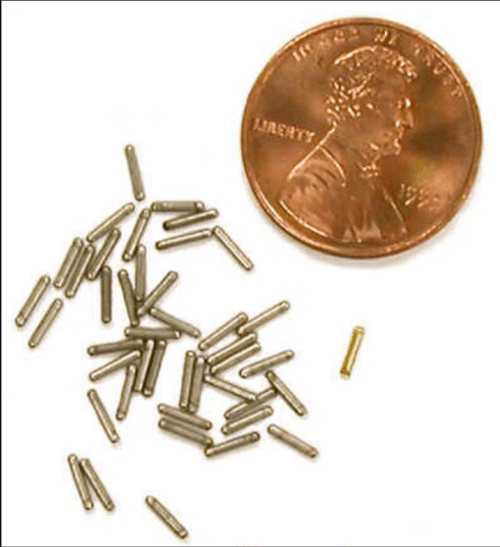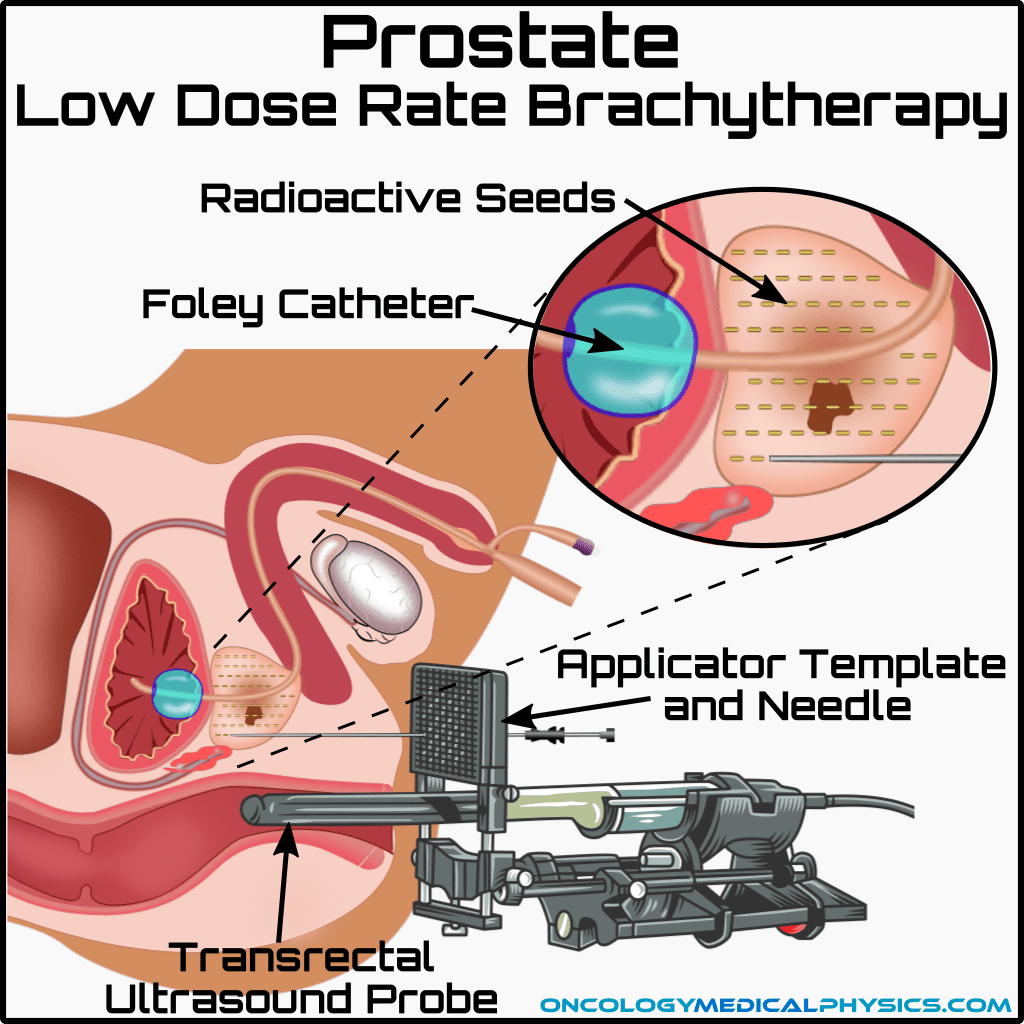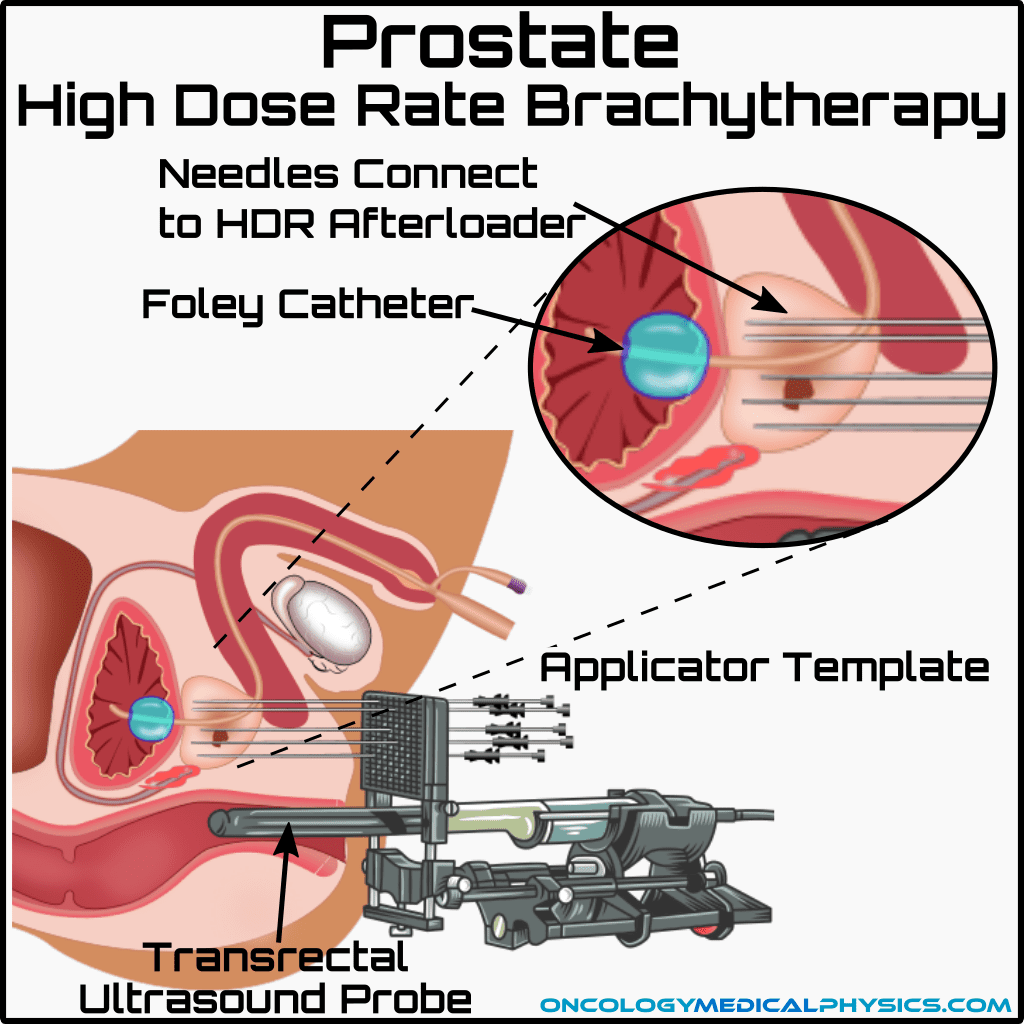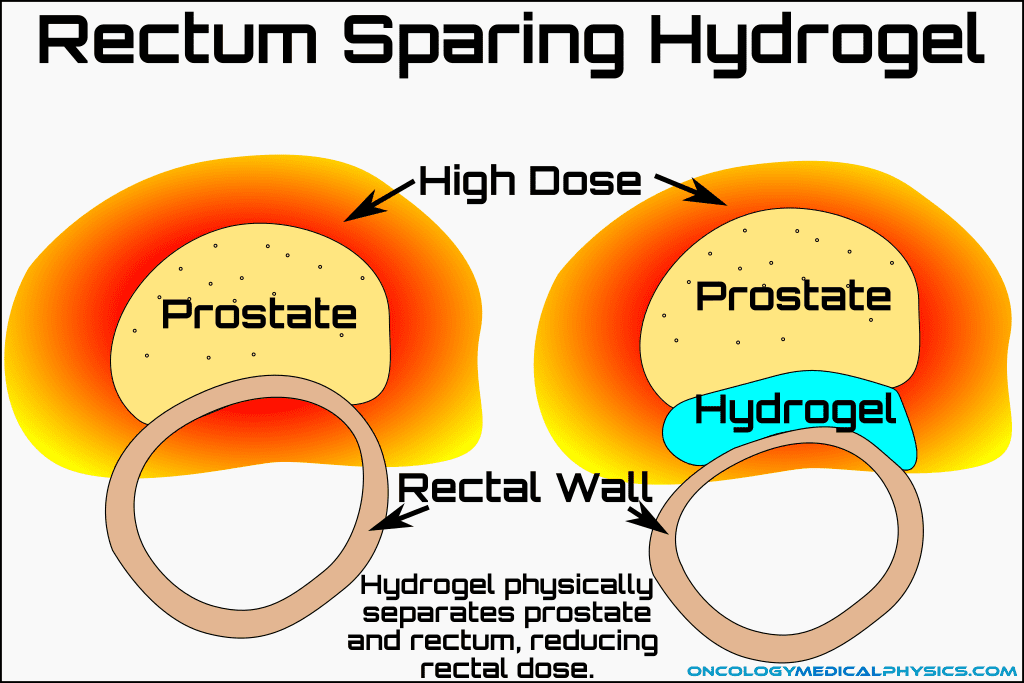Prostate Brachytherapy
Overview
Prostate cancer has been found to have a low alpha/beta ratio (~1.5) making it a good candidate for low fraction treatments. Modern prostate treatments involve 15-20 perineal needles guided by transrectal ultrasound.
LDR Prostate Brachytherapy
Selected Readings
AAPM TG-64: Permanent Prostate Seed Implant Brachytherapy (external link)
Treatment Regimen
The prescription varies significantly based on the radionuclide used. This is because differences in half life influence integral dose deposition and the radiobiologic response.
Common Prescriptions
- I-125: 145Gy
- Pd-103: 125Gy
Treatment Process
- A volume study is conducted prior to treatment to assess the number of seeds required.
- Volume commonly assessed via CT or transverse ultrasound imaging.
- A treatment plan is generated either by computer or standard template.
- Seed spacing ~1cm
- 80-120 seeds are commonly used!
- Sources
- I-125 with an activity of around 0.3mCi
- Pd-103 with an activity of around 1.7mCi
- Implantation is performed under anesthesia and guided with a transrectal ultrasound probe.
- A Mick Applicator is commonly used to place correctly spaced seeds.
- Applicator uses a seed magazine and spacing indexer to simplify placing process.
- 21cm long 18 gauge needles are used to place the seeds.
- A template may be used to assist in uniform needle placement.
- A Mick Applicator is commonly used to place correctly spaced seeds.
- A cystroscopy is performed at the end of the procedure removing any seeds that may be been placed in the bladder of the urethra.
Key Point: The urethra runs centrally through the prostate with a slight curve in the anterior-posterior direction. To prevent blockage or urethral penetration, the mid line of the prostate may not be seeded.
High Dose Rate Prostate Brachytherapy
Treatment Regimen
High dose rate prostate brachytherapy is may be used as a stand alone treatment or as a boost treatment following external beam radiotherapy.
HDR Prostate Prescriptions
- HDR alone: 13.5Gy x 2 fractions = 27Gy
- HDR boost to external beam: 15Gy single fraction
Treatment Process
Prostate HDR brachytherapy is typically accomplished using 15-25 interstitial needles inserted through the perineum. Needles are indexed for planning using a template and are guided by rectal ultrasound imaging. Once the needles are inserted, CT imaging is most often used to produce a 3D planned dose distribution in a treatment planning system.
Rectal Sparing Hydrogel
Rectal sparing hydrogel is inserted via needle between the prostate and rectum. It is useful in HDR prostate brachytherapy as a method of reducing rectal dose by physically moving the rectum away from the treated volume.
Navigation
Not a Member?
Sign up today to get access to hundreds of ABR style practice questions.




